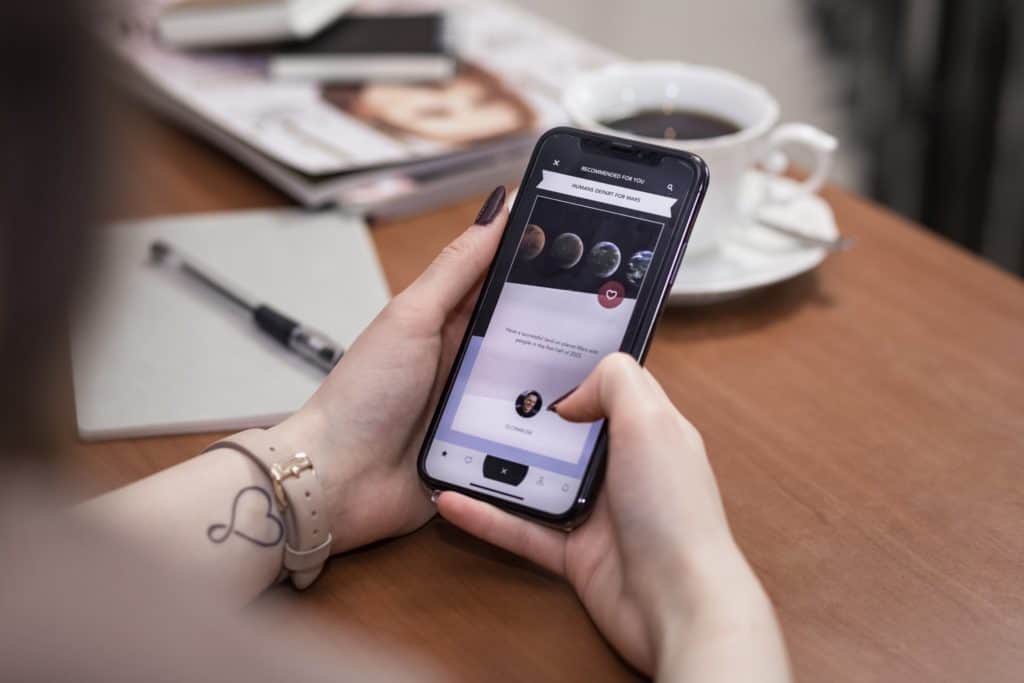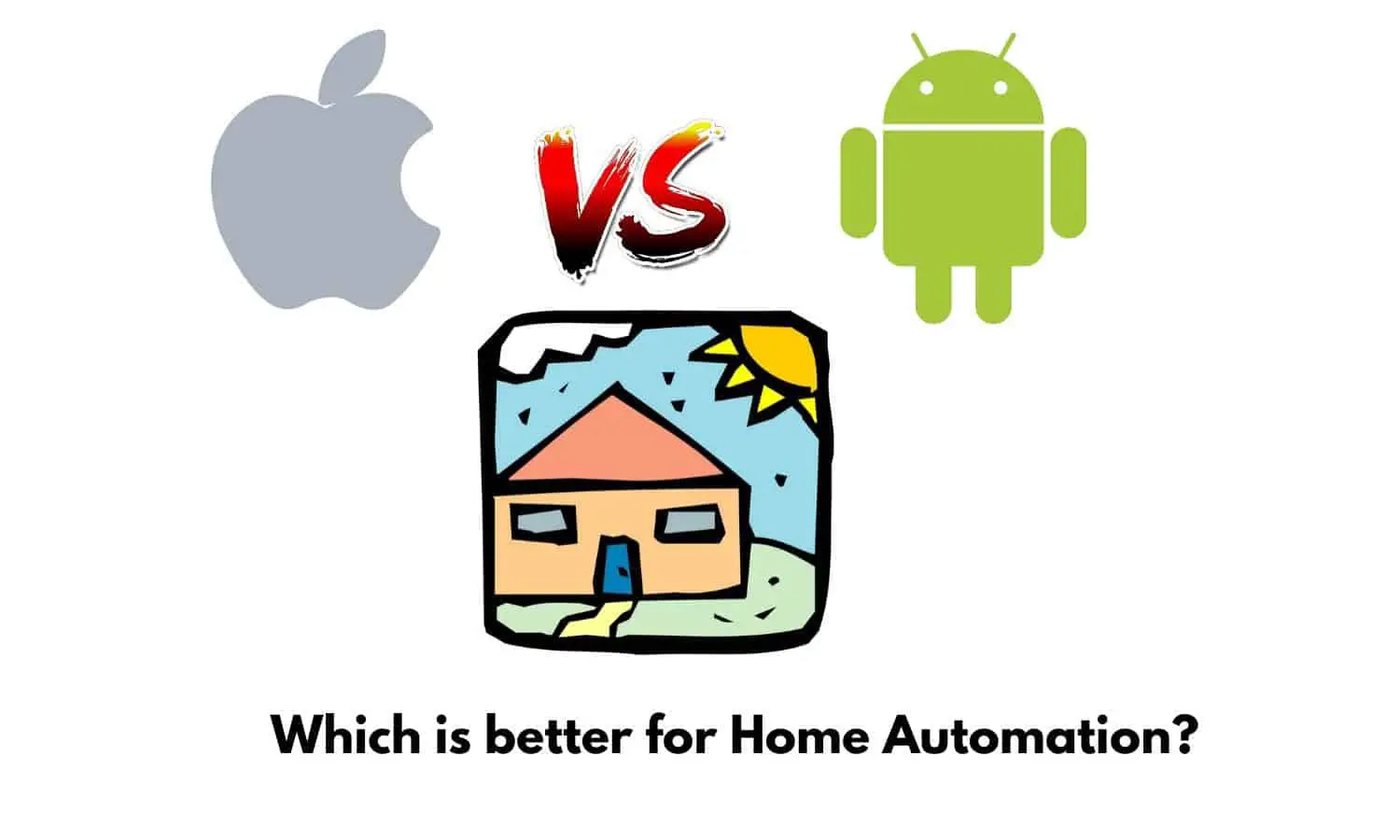Needless to say, whenever you go and pick up a new smart home gadget, you have the dilemma of installing a respective app on your particular smartphone for it to be able to work. Yet there are specific devices that do not require you to install an app and can be configured with just a few flicks of a button to operate as per your command, but to completely milk out the features; you are required to install an app into your respective smartphone of the corresponding product.
I remember when I first started off on my smart home journey, I was under the dilemma if my iOS-based devices would be the right fit for the home automation I anticipate. Questions such as: Would an iPhone be the best choice for smart home automation? Or would an Android provide me with better possibility es to scale? Do I need an Apple iPad or a Samsung tablet separately to monitor and control my smart home? Well, I would save you the agony, and if you too are in that similar zone where you are still wondering whether an Android or an iPhone is the best choice for your smart home journey, then this article would answer all your questions. Stick around and find out!
So the question is, is there really a single app out there that is capable to handle all your home automation? Realistically, both the Android and the iPhone developer’s have done an excellent job when it comes down to supporting all the smart gadgets that are available in the market today. Unless you are keen into setting up the Apple HomeKit application, then the sad news is that if you are an Android user, you won’t be able to use the HomeKit on it as this app is entirely dependent on the iOS (iPhone) platform. So if there is that one APP that can control the whole home automation for you, would be the Apple Home app.
Other than that, there is no apparent difference between using an Android or an iPhone for your home automation.
Truthfully, a smartphone’s operating system choice is made by people long before any thoughts of smart home automation are even conceptualized. I know of a very few people who were tech-picky like me to have decided to foresee in the future that they would want to have a smart home and were keen on pecking up on the operating systems that were wide open to accept the home automation apps. With the ever-growing trend and globalization, this is now the least of the concerns and both the iOS and Android developers have provided a unique platform and scripting languages that the smart home products manufacturers use efficiently to seamlessly integrate. As said above in the article, if you are entirely depending on using the HomeKit, then stay with an Apple smartphone or the Apple iPad as HomeKit can not be used in Android.
If I were to say, that “today” which is the best platform to be used for smart home automation; and if the particular smartphone that you choose to buy for your home automation would need to be replaced or no; then keep on reading!
Table of Contents
Benefits of Using an iPhone For Smart Home Automation

All the smartphones that are built and available in the market today provide you with the same amount of functionality and features; more or less. If you do end up choosing an iPhone for your smart home automation, then you can’t go wrong with it. There are distinct advantages and disadvantages to it, but here in this article, I have done my best to provide you with the research that revolves around me taking up the decision to use my iPhone for the smart home automation purposes.
What made me decide to use an iPhone for home automation? Well first of all, if you have ever used an iPhone; you would know that these nifty gadgets come with a hefty price tag. And if you are anybody like me who tries to stay on top of the gadget-craze, then get ready to shell out some decent money on upgrading your handsets each year Apple launches their new product line. Needless to say, Apple has a massive marketing budget, and they do whatever it takes to ensure that their users don’t sway away from using their products.
A list of features that made me decide on using an iPhone for home automation are:
Consistency and The Ease of Use
The only thing that enhances the adaptability of the iPhone is their ease of use and predictability. You are given with an interface that is precisely identical to its predecessor models, and the usage is “give and take”, the same. The iPhone ensures that all its apps and settings perform in a way the way Apple intended them to. Which, in return, maintains and enhances the user experience.
You do not need to necessarily go through a plethora of different settings to run the app you just installed via the AppStore. Almost all the apps you do install for your smart home gadgets into your iPhone are pretty much straight forward and easy to configure and setup.
While on the other hand, if you are an Android user; then you are pretty much stuck with going through a steep learning curve just to use your device. There are different launchers for each manufacturer who has resorted to using the Android platform.
In addition to this, the settings of each of the smart home gadgets that you intend to control via your iPhone are plain and simple. Unlike the Android, where there are not one but a plethora of different settings that you need to configure to ensure you get the best possible outcome from your home automation. This is critical again, since when it comes down to users who are not very tech-savvy and believe in the concept of user-friendly gadgets.
Voice Assistant
According to “Reviews.com”, Siri is the third most accurate voice assistant in the “WORLD”. This is based on extensive testing and if you are planning on deploying HomeKit in your smart home environment, then, needless to say, Siri is going to work wonders for you. You can easily control your smart home via Siri, and she would do its best to perform the actions you want.
On top of that, Siri’s IoT (Internet of Things) compatibility list is growing day by day. At the time of writing this article, Siri supports almost 50+ IoT Compatible brands. Which means you can control nearly 50 and above smart home brand products via voice commands using Siri on your iPhone.
Accessibility and Settings
If you were ever stuck up on thinking when to check-up on your kids when they come back from school, and you are at work, then there was an app that I initially used called as the “FLIC“. This app allowed me to automate all the smart home gadgets in my home, setting up schedules, creating workflows and much more.
But with the latest iOS upgrades, there is a brand new functionality that is going to work wonders for Smart homeowners, is the brand new shortcuts features. This nifty little feature empowered the iOS users to automate things by creating shortcuts to specific tasks in your smart home environment. For example, you can create a shortcut to switch the smart lights ON and OFF without the actual need to go into the individual application.
On top of this, the new shortcuts feature in the iOS allows you to even share these shortcuts. This indeed provided the smart homeowners such as myself, possibility to access the gadgets remotely and without a fuss. A final verdict on replacing the “FLIC” app with Apple Shortcuts? A Big YES!
While on the other hand, if you are an Android user, there are certain features which quite sadly aren’t available in the Apple products.
Android platform provides you with seamless and direct integration with Google Voice Assistant and Google Home product line. Let me also add here that Google Assistant is the number 1 voice assistant in the world and is one of the most accurate AI (Artificial Intelligence) voice-enabled assistants that you could get your hands on.
With Android smartphones, you also now have the ability to use Google Duplex! It is the next step in the smart automation world where you can use your Google Voice Assistant to book hotels and make reservations at your local favourite restaurant.
This sweet little feature is not available in Apple Siri, and I believe that in the near future as well, Google Duplex would not be willing to share the platform with the Apple manufacturers.
Therefore, if you are primarily targeting towards controlling your smart home thoroughly using your voice; then iPhone may lose points significantly in this domain. As far as Google Voice Assistant is concerned, it is far beyond “Siri” and I don’t think that Apple would ever be able to catch on what Google Voice Assistant can offer to its audience.
Fewer Security Breaches
Unlike Android, Apple provides its users with a closed platform. When I say closed, it means you can not access the RAW files on the device directly. For some, this is a limitation! But let me cut straight to the point here and break the news to you. The less access you have to the core files that run your smartphone, fewer the change that you would mess something up and end up with a bricked-handset.
According to a recent report, millions of Android devices are infected with malicious codes and hijacked through some app that had malware’s in it. This, in result, had a massive impact on the data privacy and essential and critical user information getting leaked into the hands of the hackers. May users also ended up reporting huge charges on their mobile phone bills, following a virus attack that took place on their Android phones.
Given that Apple doesn’t allow the users to directly play with their core files on the gadget, it is safe to assume that the smart home gadgets that you then connect to it are also through a secured protocol. These secured protocols are only valid until the moment you have not played around with the core files on your iPhone. But having said, Apple does an excellent job from keeping the curious monkey out by limiting the accessibility to its core functionalities that ensure a smooth operating iPhone.
Timely Updates
This is yet another aspect of why the iPhone is the most preferred smartphones when it comes down to scalability and security. Apple beats Android hollow on the timely and meaty updates. When Apple releases new firmware upgrades, they flat out release it for all the models that are still supported by them. And by far Apple is known to support models ranging back to iPhone 5s. But when it comes down to the Android smartphones, you can only hope and pray for an upgrade to take place if you are on older models.
Unlike Apple, where every detail is under Apple’s control, with the Android, Google is responsible for only supplying the base operating system, and rest is then left to the manufacturers of the smartphone who have resorted to using the Android OS to deliver upgrades and patches.
I am not against Android, just stating the obvious here: If you are on a high-end model of the Android, then chances are you would get frequent updates. But I can’t say the same about the older Android OS models.
So once your particular model of the Android OS stops getting updated, chances are the smart gadgets around your home that have already been upgraded to the latest firmware would stop working on your android phone. Due to incompatibility issues. NO one wants to be on that side of receiving things!
If you are keen to know my recommendation based on which devices work well with either Apple’s HomeKit or Google Home, then the below chart is a must-bookmark for you.
| Devices | My Devices | Apple HomeKit | Google Home |
| Alarm System | Ring System | X (Via HomeBridge) | |
| Ceiling Fan Control | Lutron | X | X |
| Garage Door Opener | Chamberlain MyQ | X | |
| LED strips | Koogeek LED Lights | X | X |
| Lighting | Lutron | X | X |
| Motion Sensor | ONVIS Sensors | X | |
| Robot Vacuum | iRobot 960 | X | |
| Security Camera | Logitech Circle 2 Wired | X | X |
| Smart Blinds | Serena | X | X |
| Smart Locks | August Smart Lock | X | X |
| Smart Plug | Wemo | X | X |
| Smoke Detector | Ring | X | |
| Thermostat | Ring | X | X |
| Video Doorbell | Ring Doorbell | X |
Related Questions
What is a Home App and What Can I Control with It?
Home App is a centralized application that controls all your smart home gadgets in one place. This app is only available on Apple smartphones. A list of devices that you may manage with an Apple Home App are:
- Air conditioners
- Air purifiers
- Network Bridges
- Cameras
- Doorbells
- Fans
- Faucets
- Garage Doors
- Humidifiers
- Lights
- Locks
- Plug Outlets
- Receivers
- Routers
- Security
- Sensors
- Speakers
- Sprinklers
- Switches
- Thermostats
- TVs
- Windows
Can I Control My House Lights with iPhone?
For any smart lights to work with your iPhone, you need to ensure they are HomeKit compatible. Certain brands that are integrated to work with the HomeKit are:
- LiFX
- Philips
- Yale
- Arlo
All of these above manufacturers offer their own stand-alone app for you to control them. But it is often at times more comfortable to just use the Appel HomeKit to control them all in one place.
Once you have ensured the HomeKit connection is established with your house lights, just use “Siri” to activate the House lights. You can also switch the lights off via “Siri”.
What Devices Can I Use as A HomeKit Hub?
You can use several Apple devices to act as a HomeKit hub. The list is as of below:
- Apple TV (3rd Generation and later)
- HomePod
- Apple iPad (running iOS 9 and above)
My Recommendation & Conclusion
If I keep all the above in mind and based on my usability around my requirements and smart home automation that I have in place, then without a speckle of doubt in mind; I would stick with the Apple iPhone and its successors. Yes, Apple Siri needs a bit of work, but the “PROS” to using an iPhone broadly weighs out the “CONS” of using the Android for home automation.
If you are a heavy user of Google Assistant and have quite a few NEST products in your home then logically, an Android-based smartphone would a better choice. But let us not forget that if you want to control your Google Assistant or NEST products using an iPhone that too is entirely possible, thanks to the corresponding apps available in the AppStore. Most importantly, if you are planning on using Apple’s HomeKit then under no way in heaven’s, you should buy an Android since HomeKit only supports Apple smartphones and iPad’s.
And not but not the least, who hates giving commands to HomeKit by merely raising the wrist and passing on the voice instructions to it via your Apple watch. I can also wear my AirPods and say “Hey Siri!” I am going upstairs”, and the HomeKit would be given the instructions to lock the main door, turn down the blinds and switch off the lights and the smart TV.
Happy “Jetsons” home people!



